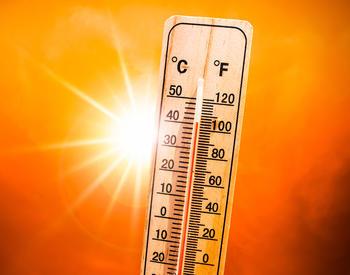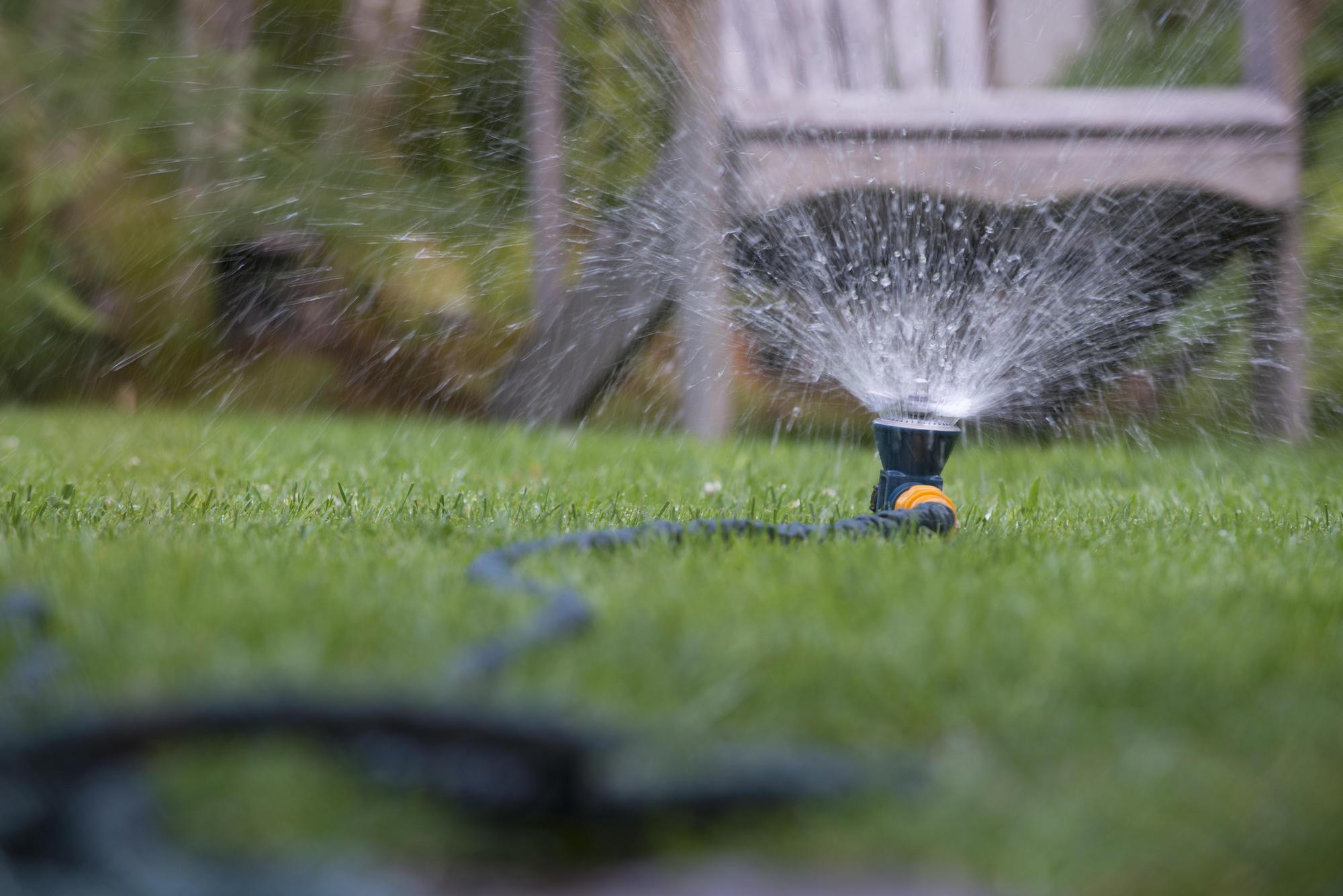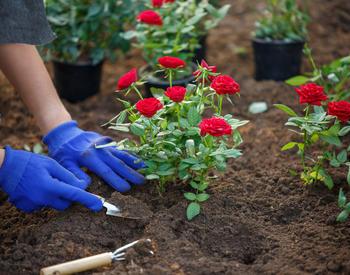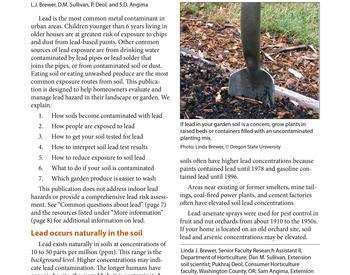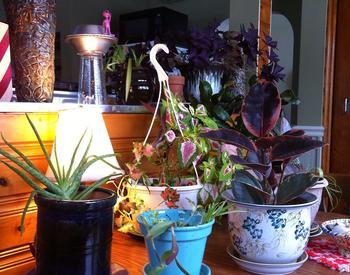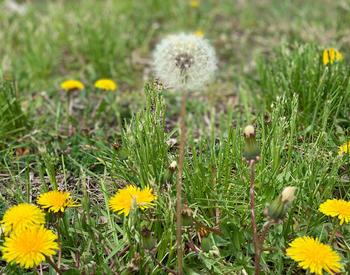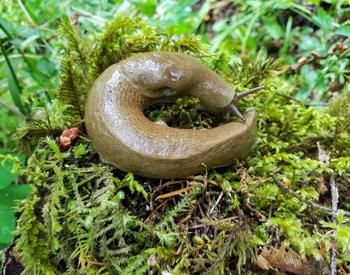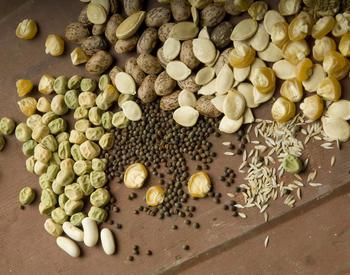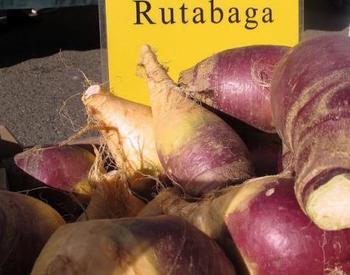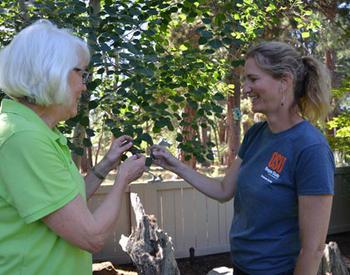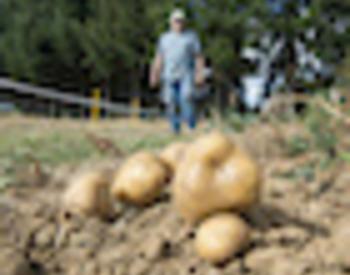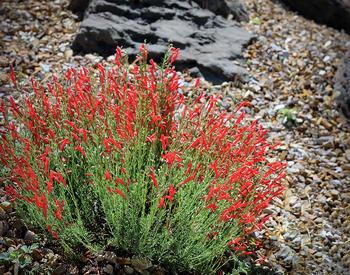When a heat wave hits, plants may show the impact.
- Most plants grow best in temperatures ranging from 59°–86°F.
- When temperatures above 90°F are sustained for long periods, plant growth is slowed, and some plants begin to show signs of stress.
- Above 104°F, many plants will survive but will show different signs of heat stress depending on plant type, maturity of the plant and factors that often come with high temperatures, such as drought or wind.
- Extreme air and soil temperatures slow down chemical activity and growth in plants.
What are signs of heat stress in plants?
Leaf rolling and cupping
Corn and tomatoes are among many plants that commonly roll their leaves or cup in response to heat. Leaf surface area is minimized, and stomata (microscopic openings in leaves, like pores, that allow movement of moisture and gasses) close. Together, these reduce moisture loss in the plant.
Wilting
Wilting occurs when low moisture in the plant creates a lack of water pressure within the plant. Common in nonwoody annuals and perennials, many plants will recover when temperatures drop. The potential for permanent damage increases with the length of time that a plant remains wilted. Plants that wilt during the hottest part of the day and recover in the evening and early morning are likely suffering from heat stress.
Dry leaf edges
A survival mechanism used by some plant types is that the outer margins of a leaf will dry up, but the leaf as a whole remains viable. This may be more common in large-leaved plants like squash and pumpkin, where there is more leaf surface area to “spare” and still maintain function. Dry leaf edges can appear similar to disease symptoms.
Ozone damage
When high temperatures are combined with poor air quality, ozone damage can result. For example, in the Klamath Basin, where air inversions are common, ozone damage to tomatoes has been observed when hot temperatures and wildfire smoke are present.
Ozone damage can also be confused with a disease. In tomatoes, for instance, the dry brown spots in between leaf veins resemble bacterial leaf spot (the bacterial spots will have yellow “halos” that ozone damage does not). In cucumbers, squash and pumpkin, ozone-damaged leaves become bleached and very dry-looking.
Blossom and fruit drop
Numerous ornamentals abort or drop buds and flowers after prolonged exposure to high temperatures. This allows the plant to conserve resources for parts of the plant necessary for survival.
Blossom and fruit drop are common in peppers, squash and cucumbers when high temperatures persist. Most plants will return to typical production after a heat wave is over.
Bolting
Bolting is the premature flowering of plants before they would typically be harvested. High temperatures induce bolting in cool-season vegetables.
A heat wave will likely mean the end for many cool weather plants like cilantro, broccoli, cauliflower, lettuce and spinach. For the best quality and flavor, it may be helpful to harvest these foods when a heat wave is predicted.
Sunscald
From apples to tomatoes to melons, many fruits will scald in high temperatures, primarily on the side of the fruit most exposed to the sun. Sunscald looks different on varying fruit types and may appear as a watery area on the fruit, discoloration, blisters on the skin of the fruit, dried-out fruit, or sunken, hardened areas on the fruit surface.
Blossom end rot
A common tomato problem associated with deficient calcium can become more problematic when sunscald is present. Consistent watering helps minimize blossom end rot. Avoid letting plants completely dry out between soaking.
How to reduce heat stress in plants
Watering
While recommendations regarding the ideal timing of watering vary, deep watering is preferred over shallow watering. Morning watering is often prescribed in times of high heat, but wilted plants should be watered as soon as is reasonable to minimize the time spent in a wilted state.
Know your plants' roots:
- Shallowly rooted plants will dry out more quickly and will wilt faster.
- Tap-rooted plants can draw water from deeper into the soil.
- Young plants with less root development will need water more often than older, established plants with a large network of roots for drawing moisture from the soil.
Mature trees can suffer from heat and drought stress just like smaller plants but may not show symptoms of that stress until much later.
More detailed information about watering, when to water and how to water is here.
Mulch
Mulch conserves moisture in the soil by slowing evaporation and minimizing temperature fluctuation in the soil. Shallowly rooted and young plants will be most impacted when the top few inches of soil are hot and dry.
Provide shade
Move containers where they get shade. Provide shade cloth or other means of shade, where possible. Heat stress is compounded when other plant stressors like drought, wind or intense sun are also present.
If using a shade device not typically used for gardening, like a beach or picnic umbrella, consider adding it in the late morning and removing it toward the end of the day so plants get some direct sunlight. Be prepared for plants that are heavily shaded for long periods to “stretch” toward more light.
Provide humidity
Leaves take in small amounts of moisture through the stomata or openings in the leaves. In small-scale gardens and home greenhouses, providing additional humidity can be helpful for many plants.
Typically, applying moisture to leaves intentionally is not recommended in the garden: leaf moisture along with the presence of a pathogen and the right temperature increase susceptibility to plant disease. However, in cases of prolonged high temperatures, the benefit of a humid environment probably outweighs the risk of plant disease.
Some strategies for adding humidity could be a morning, light overhead watering to the leaves or canopy, or greenhouse plants. Outdoor container plants can be grouped together and misted with a mist sprayer. A pressurized mist sprayer makes this job easier with large numbers of plants or large plants.
Don’t plant or transplant
Too-warm soil temperatures can kill young seedlings, or cause cankers where the stem meets the soil line. Transplanting is stressful to plants without the added issues caused by high temperatures. Postpone planting or transplanting until cooler temperatures arrive.
Don’t prune trees and shrubs
Removal of leaves and branches means a new part of the canopy will be exposed to sunlight. In times of intense heat, this can lead to sunburn in leaves that were previously shaded. Trees and shrubs with sunburn in a portion of the canopy will likely recover but will be unattractive in the meantime. Stressed trees are more likely to attract damaging insects like wood-boring beetles.
Wait to fertilize
During periods of intense heat, inducing new growth is not ideal. Wait until a cooler period to fertilize.
Don’t apply chemicals
Many treatments for plant disease and insect issues can damage plants when temperatures are consistently above 80°F. Check the label of a product for specifics before applying. Some plant types such as conifers and succulents can be further damaged by any treatment—even soap or neem oil—applied during extreme heat.
Reduce competition from weeds
One activity to not postpone in the garden during a heat wave is weeding. Many weeds are better adapted to extremes than ornamental plants: weeds compete with garden plants for water and nutrients.
For more information on heat and plants, see information from:
Reference:
Plant Pathology, 5th Edition. Agrios, George N., 2005, Elsevier Press. Pp. 359-361
